The Plan to Stormproof Battery Park City
The Battery Park City Authority released its first proposals for increasing flood resiliency. The biggest changes are to Wagner Park, at the south end of Battery Park City, but let’s work up to that. First, the ball fields would get a wall along Warren, West, and Murray, with deployable barriers at the entrances in the event of a flood. “The wall would vary in height from two to three feet at the western end to eight or nine feet near the corner of Warren and West streets, where elevation is the lowest,” reported the Tribeca Trib.
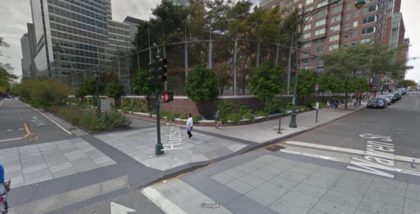
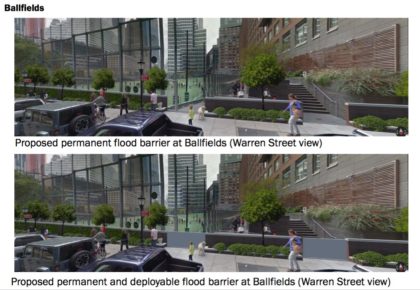 For the northern part of Battery Park City, above North Cove Marina, the BPCA wants to reconstruct the curved wall that runs along River Terrace, making it taller, and add deployable barriers wherever there’s an opening. The idea is that all the walls and other barriers will reach a height of 16.5 feet above sea level.
For the northern part of Battery Park City, above North Cove Marina, the BPCA wants to reconstruct the curved wall that runs along River Terrace, making it taller, and add deployable barriers wherever there’s an opening. The idea is that all the walls and other barriers will reach a height of 16.5 feet above sea level.
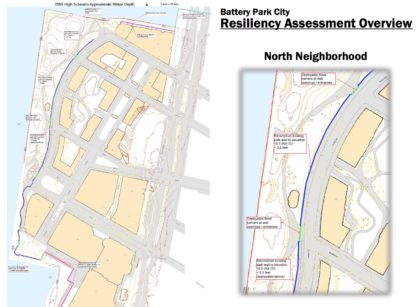 For the central third of Battery Park City, the BPCA proposes rebuilding park walls so they’re 16.5 feet above sea level and reconstructing the water feature in front of Brookfield Place in order to incorporate flood protection.
For the central third of Battery Park City, the BPCA proposes rebuilding park walls so they’re 16.5 feet above sea level and reconstructing the water feature in front of Brookfield Place in order to incorporate flood protection.
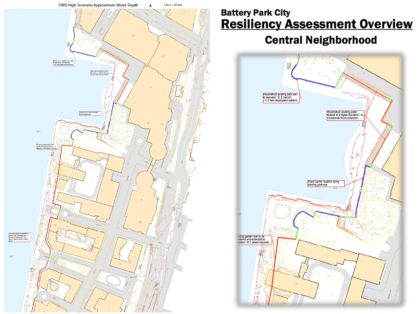 The garden wall along the southern third will get “hardened and extended to 16.5 [feet] where required,” along with “proposed garden wall[s] within new planters with self-deploying or manually deployable flood barrier[s] spanning park access points.”
The garden wall along the southern third will get “hardened and extended to 16.5 [feet] where required,” along with “proposed garden wall[s] within new planters with self-deploying or manually deployable flood barrier[s] spanning park access points.”
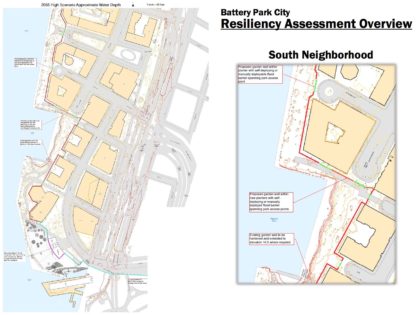 Click this link for the full Resiliency Assessment Overview [PDF]. All of the above images are by the Battery Park City Authority.
Click this link for the full Resiliency Assessment Overview [PDF]. All of the above images are by the Battery Park City Authority.
As for Wagner Park, the Broadsheet has a nice summary:
The two centerpieces of the plan are a large new, sloping lawn and a new pavilion, which would replace the existing structure that houses Gigino’s restaurant, public lavatories, and storage space. Together, the lawn and the pavilion would form a continuous flood barrier stretching from the Battery (the public park on the far side of Pier A) to the Museum of Jewish Heritage [….] Also included in the plan are new gardens, an outdoor stage next to the Museum of Jewish Heritage, docks alongside the Esplanade at which cultural and educational vessels can moor, and wetlands in the small, unused inlet between Wagner Park and Pier A. Additionally, this inlet would be bridged by an overlook, allowing pedestrians to walk directly from the Wagner Park Esplanade to Pier A, rather than having to trek several hundred feet to backtrack around the small cove.”
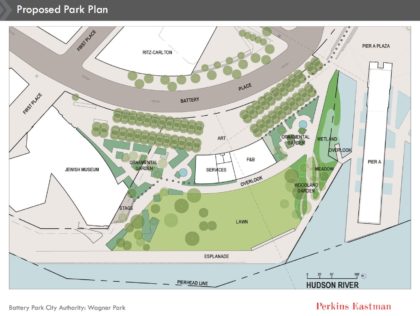
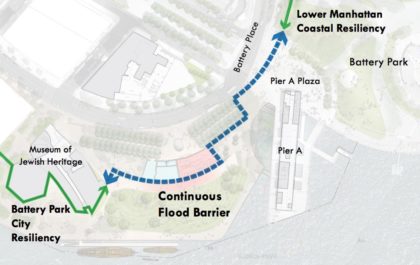 The park was reconceived as a series of “places.”
The park was reconceived as a series of “places.”
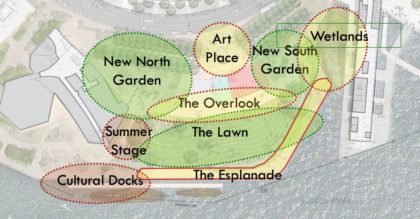 There’s more in the Broadsheet’s article about the new building—which, at 17,000 square feet, is more than twice of the size of the one it’s replacing. The restaurant will get a lot larger, while the public restrooms will be shrunk to half their current size. The new building will also have a 1,700-square-foot community room.
There’s more in the Broadsheet’s article about the new building—which, at 17,000 square feet, is more than twice of the size of the one it’s replacing. The restaurant will get a lot larger, while the public restrooms will be shrunk to half their current size. The new building will also have a 1,700-square-foot community room.
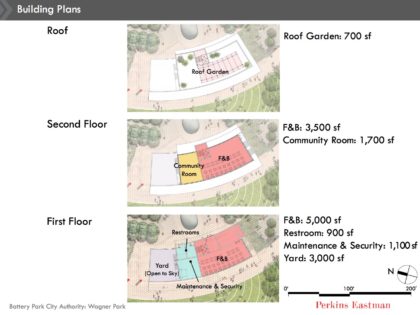 Renderings of the new building:
Renderings of the new building:
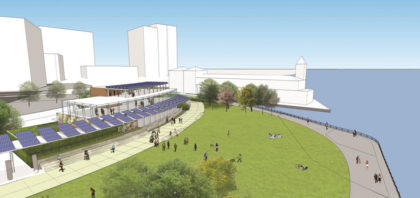
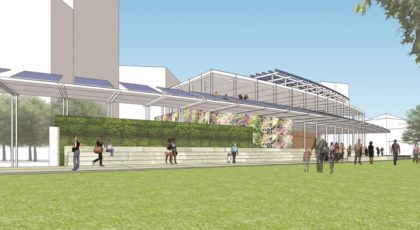
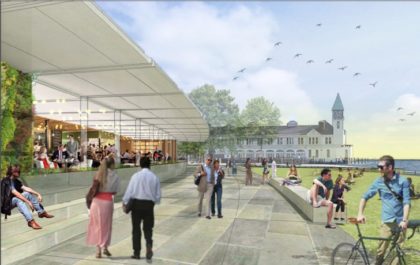
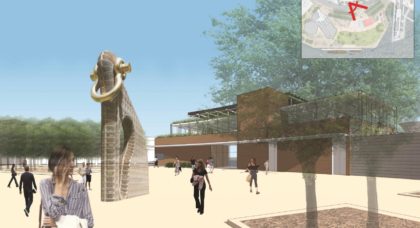 Perkins Eastman’s full Wagner Park Update [PDF] presentation is also online. All of the above images are by Perkins Eastman.
Perkins Eastman’s full Wagner Park Update [PDF] presentation is also online. All of the above images are by Perkins Eastman.












